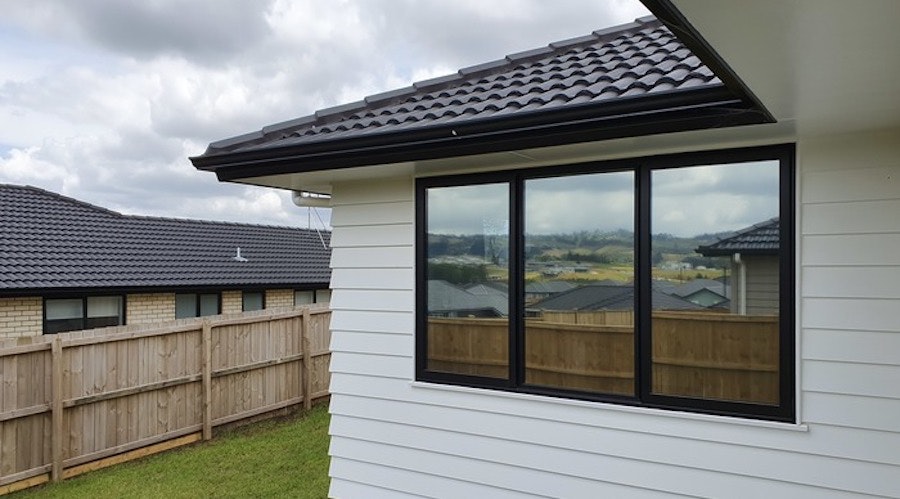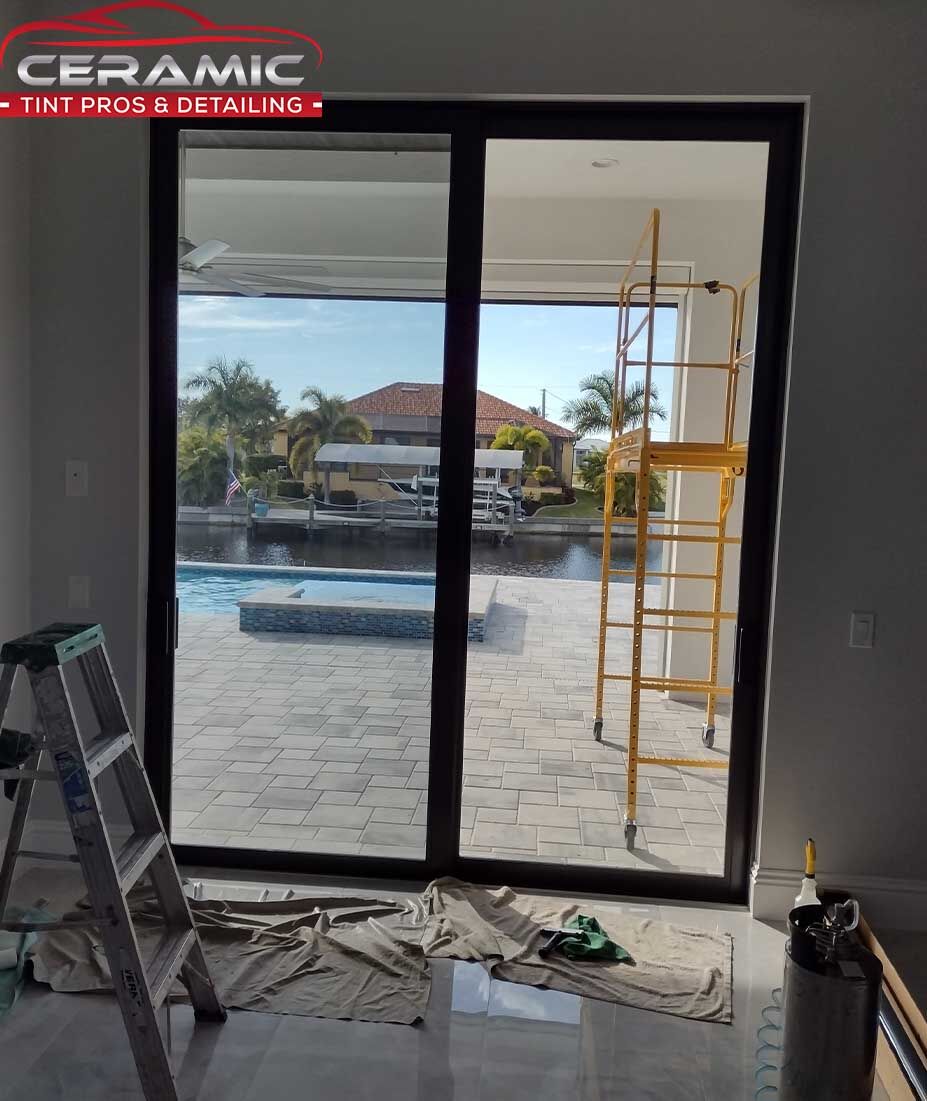Residential Window Tint: Keep Your Home Cool in the Summer Warm
Residential Window Tint: Keep Your Home Cool in the Summer Warm
Blog Article
How Residential Window Tinting Boosts Your Home's Energy Performance
Residential home window tinting offers a compelling service for home owners looking for to enhance energy effectiveness within their living areas. By using specialized movies to home windows, it effectively decreases warm transfer, consequently maintaining interior temperature levels and decreasing the need for excessive heating or cooling.
Comprehending Window Tinting
Comprehending window tinting is crucial for homeowners seeking to enhance both comfort and energy efficiency in their space. Residential Window Tint. Home window tinting includes the application of a slim film to the interior or exterior surface area of glass home windows. This movie can significantly modulate the amount of sunshine and warmth that gets in a home, therefore affecting indoor climate conditions
There are various sorts of home window tinting movies available, each with distinctive homes. For example, dyed movies soak up solar power, while reflective films deflect it far from the glass surface area. Ceramic movies use a balance of visibility and warmth denial, making them a prominent choice among homeowners. The performance of home window tinting is usually gauged by its Visible Light Transmission (VLT) portion, which indicates just how much light can pass through the movie.
Advantages of Energy Performance
Window tinting not just improves looks but additionally plays a considerable role in enhancing energy effectiveness within domestic rooms. By decreasing warmth transfer through home windows, colored films develop a more steady interior climate, which can cause significant reductions in energy usage for heating & cooling. This energy efficiency converts right into lower energy costs, supplying property owners with significant long-term financial savings.

In addition, home window tinting improves the comfort of living areas. By reducing glow and blocking damaging UV rays, tinted home windows produce an even more pleasurable atmosphere, which can result in improved health for passengers. The security against UV rays also helps preserve furniture and floor covering from fading, contributing to the longevity of family things.
How Tinting Functions
Tinting movies operate with a mix of sophisticated products and innovations designed to manage the quantity of solar power getting in a home. Mostly composed of polyester, these movies often integrate metallic or ceramic fragments that soak up and mirror warmth. This double ability enables them to dramatically decrease the penetration of ultraviolet (UV) rays and infrared radiation while allowing noticeable light to pass through.
The efficiency of home window tinting is gauged by its solar warmth gain coefficient (SHGC), which indicates exactly how much solar power is transmitted via the home window. Lower SHGC values are more effective as they signify greater heat being rejected. Furthermore, window colors can feature a variety of tones, allowing home owners to personalize their aesthetic preferences while enhancing power performance.
Moreover, these films function as an obstacle, stopping warmth loss during colder months by showing indoor heat back into the space. This thermal insulation result complements the cooling advantages see page gained during warmer months, adding to a balanced indoor environment year-round. By taking care of solar power successfully, residential window tinting not just improves convenience however also plays an essential role in minimizing energy intake and lowering energy costs.
Picking the Right Tint

There are different types of home window films offered, consisting of dyed, metalized, and ceramic. Ceramic movies offer superb warm control without endangering exposure and are extremely resilient, making them a popular selection.
Visible light transmission (VLT) is an additional important element, as it shows the quantity of all-natural light that can pass with the tinted glass. Home owners should choose a tint with a VLT that matches their lights preferences while still offering sufficient glare reduction.
Furthermore, evaluating the solar warmth gain coefficient (SHGC) can aid establish exactly how well a color can obstruct heat from sunshine. A reduced SHGC indicates try this out much better warm control, ultimately improving power effectiveness.
Installation and Upkeep Tips
Correct setup and upkeep are vital elements in optimizing the benefits of residential home window tinting. To accomplish optimal results, it is advisable to work with a qualified specialist for setup. This makes sure that the tint is used properly, preventing air bubbles, wrinkles, or misalignment that could endanger performance. Specialists also use specialized devices and review methods, which can enhance the durability and effectiveness of the color.
Adhering to installment, maintenance is important to prolong the life of the home window movie. It is advised to wait at the very least 1 month before cleansing the colored windows to allow the adhesive to treat totally. When cleaning, make use of a soft cloth and a gentle, ammonia-free cleaner to stay clear of harming the movie. Stay clear of unpleasant products that might scratch the surface.
Attending to these problems quickly can avoid further damages and preserve energy performance. By sticking to these setup and maintenance tips, home owners can guarantee their window tinting continues to give considerable energy savings and convenience for years to come.
Final Thought
To conclude, residential home window tinting works as an effective solution for improving energy performance within homes. By minimizing heat transfer and obstructing unsafe UV rays, home window films add to lower power usage and improved indoor comfort. The option of suitable tinting products, together with proper setup and maintenance, additionally makes best use of these benefits. Inevitably, window tinting stands for a lasting financial investment that not just decreases utility bills but additionally promotes a comfy living environment throughout the year.
Window tinting includes the application of a slim movie to the interior or exterior surface area of glass home windows. By reducing warm transfer with home windows, tinted films produce an extra secure indoor climate, which can lead to considerable decreases in power consumption for heating and cooling.The efficiency of home window tinting is gauged by its solar heat gain coefficient (SHGC), which shows just how much solar energy is transmitted with the window. By taking care of solar energy efficiently, property home window tinting not just improves convenience yet additionally plays a vital role in reducing energy consumption and reducing utility expenses.
By decreasing warm transfer and blocking dangerous UV rays, home window movies contribute to reduce energy consumption and improved indoor comfort.
Report this page